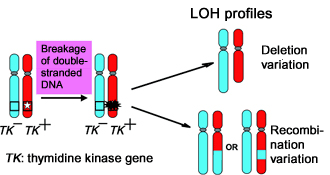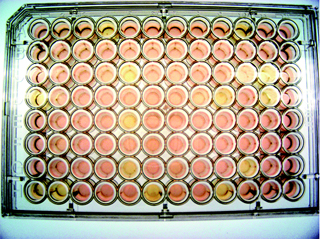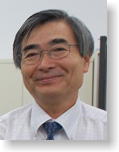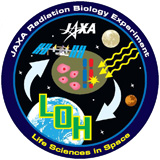This is an archive of information released in the past.
Disclaimer: It may contain broken links or outdated information. Some parts may not function in current web browsers.
*Visit https://humans-in-space.jaxa.jp/en/ for the latest information.

Experiment
- News
- Kibo Utilization Strategy
- Kibo Utilization Plan
- List of JAXA's Utilization Themes
- Experiment Facilities
- Space Environment Utilization
- Archive
High-sensitivity detection of “evidence” of radiation damage to genes
Detection of Changes in LOH Profile of TK mutants of Human Cultured Cells
LOH
Background
As for the effects of space radiation on organisms, it is noted that damage to genes by space radiation may promote oncogenesis. However, it has rarely been observed how radiation damages genes or how the damage is repaired.
Therefore, this experiment will use a “trick” that will make it possible to detect with high sensitivity loss of heterozygosity (LOH) as the “evidence” that radiation has directly damaged genes.
Objective

Figure 1. Mechanism of loss of heterozygosity (LOH)
Heterozygous cells, in which a mutation has been induced into one chromosome of a pair, will be launched. If the other chromosome is damaged and LOH occurs, it will be detected.

Figure 2. Detection of LOH based on a change in the color of the culture medium
Culture medium is contained in 96 wells. The color of the medium changes from red to yellow if LOH cells, which have lost heterozygosity, grow. This is because waste products from living cells change the color of the medium. Based on the change in the color, LOH cells are detected among heterozygous cells.
The keyword for this experiment is hetero. It is a Greek word meaning “different.” Its antonym is homo, which means “same.” Each human cell contains 23 pairs of chromosomes. Genes are arranged on the chromosomes.
In the experiment, a mutation will be induced into a gene on one of a pair of chromosomes and the corresponding gene on the other chromosome will remain normal. Since this will result in a combination of an abnormal gene and a normal gene, the pair will be “heterozygous.” Samples will be brought to space in the heterozygous state. If the normal chromosome is damaged by exposure to space radiation, both genes may become abnormal, resulting in LOH (Figure 1).
After being brought back to Earth, the samples will be treated with a special chemical and cultured. Heterozygous cells, in which no change has occurred, will all die while cells with LOH, in which a change has occurred, will be detected alive (Figure 2). Since this method easily distinguishes living cells from dead cells, it can surely detect a change in even one cell.
Space radiation contains heavy particle with such high energy that they can cut chromosomes. Since heavy particle can damage cells severely, it is possible to detect the damage by many other methods. However, the orbit of the International Space Station is not frequently showered with heavy particle but continuously exposed to radiation with lower energy. Therefore, detection with higher sensitivity is required to detect the effect.
Outline of the Experiment

Figure 3. Space experiment flow
Frozen cells will be launched to the International Space Station. In space, they will be incubated at 37クA訝 and cultured for about one week. Then, they will be frozen again and brought back to Earth for analyses.
Frozen human lymph cells will be launched. In each cell, a mutation will have been induced into a gene on one of a pair of chromosomes. This means the cells will be heterozygous.
The frozen cells will be thawed in space. They will be cultured in the microgravity compartment and the 1G compartment at 37クA訝 for about one week. Then, they will be frozen again and brought back to Earth (Figure 3). When they are treated with a special chemical and cultured, heterozygous cells, in which only one gene will contain a mutation, will die while LOH cells, in which both genes will contain a mutation, will survive and change the color of the culture medium from red to yellow. This will make it possible to distinguish living cells from dead cells (Figure 2).
This method will detect LOH cells, in which both chromosomes will contain a mutation because damage will have been inflicted in space. It will also make it possible to determine the nature of the damage that can cause mutations and the way the damage will have been repaired.
This is the Point!
This is a highly sensitive experimental system where a mutated cell can be detected among numerous cells using a property of heterozygosity. This system has been used to detect and analyze very rare phenomena on Earth. This experiment will be the first space experiment in which the system will be used.
It is possible to conduct experiments on Earth in which low-energy radiations, such as X rays, and heavy particle beams are separately irradiated. However, the radiation environment where they are mixed is unique to space. Investigation of its effects is very important for future human space activities. This may be considered a feature that only space experiments can provide.
 |
Principal Investigator Fumio Yatagai Visiting Senior Scientist, RIKEN |
 |
| Copyright 2007 Japan Aerospace Exploration Agency | Site Policy |